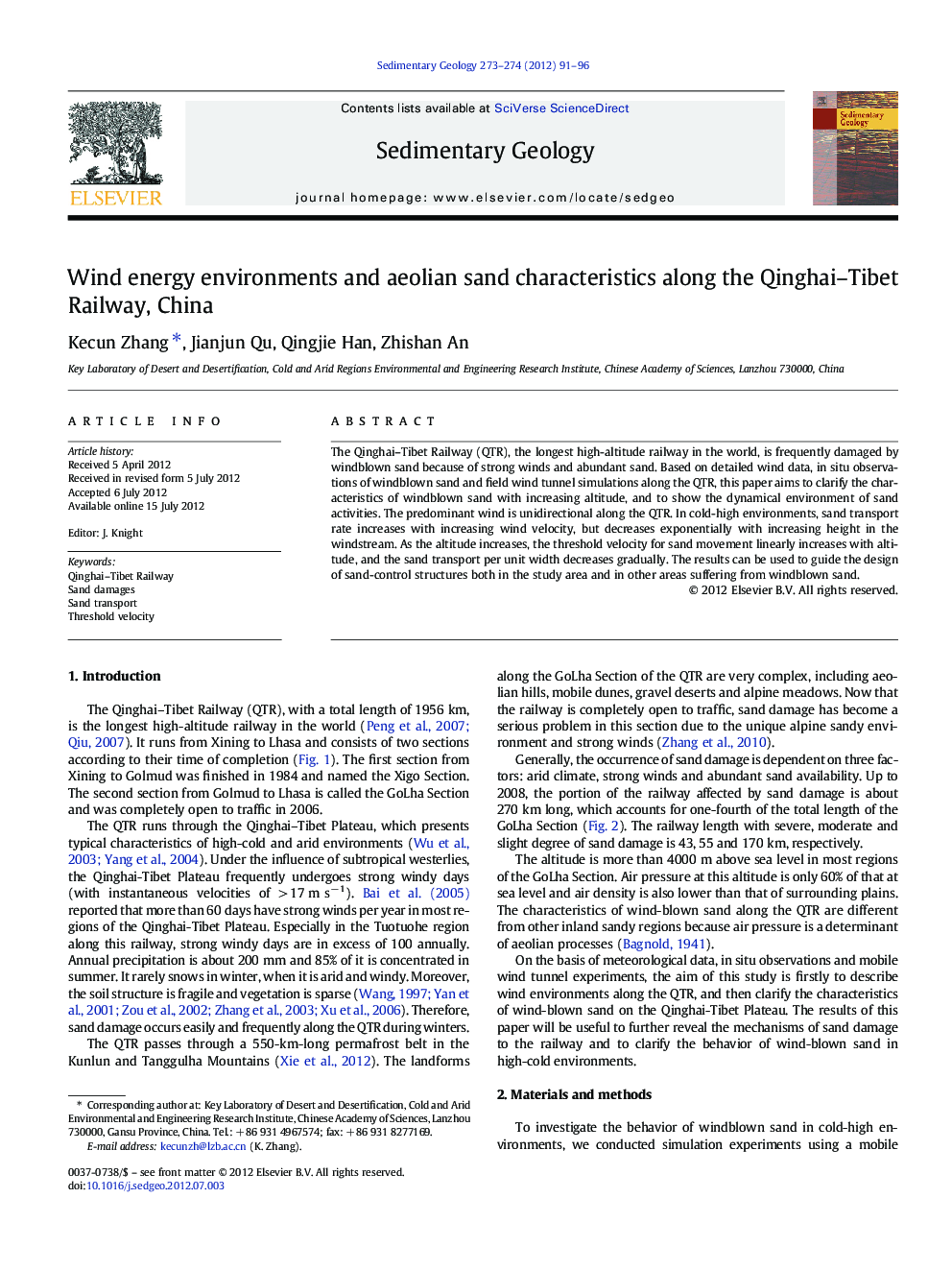| Article ID | Journal | Published Year | Pages | File Type |
|---|---|---|---|---|
| 4689715 | Sedimentary Geology | 2012 | 6 Pages |
The Qinghai–Tibet Railway (QTR), the longest high-altitude railway in the world, is frequently damaged by windblown sand because of strong winds and abundant sand. Based on detailed wind data, in situ observations of windblown sand and field wind tunnel simulations along the QTR, this paper aims to clarify the characteristics of windblown sand with increasing altitude, and to show the dynamical environment of sand activities. The predominant wind is unidirectional along the QTR. In cold-high environments, sand transport rate increases with increasing wind velocity, but decreases exponentially with increasing height in the windstream. As the altitude increases, the threshold velocity for sand movement linearly increases with altitude, and the sand transport per unit width decreases gradually. The results can be used to guide the design of sand-control structures both in the study area and in other areas suffering from windblown sand.
